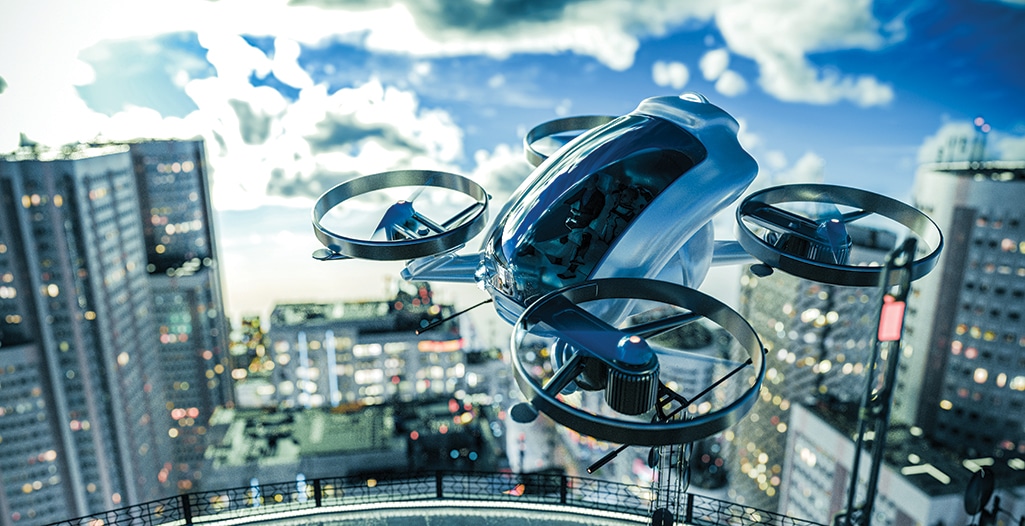Fixed-Wing Electric Cargo Delivery: An Enabler for Broader Electric Aircraft Use?
Progress toward certification and operation of new battery-powered aircraft continues at an encouraging pace. Industry leaders are engaged and so are regulators.
While some are pessimistic about the widespread adoption before the end of the decade, the pieces are falling into place that will enable new aircraft and technologies to achieve commercial reality in the near term.

The Challenge for eVTOL
It is not surprising that industry insiders are cautious, given the complexity of developing and certifying electric vertical take-off and landing (eVTOL) aircraft. Add the need to establish the infrastructure this nascent industry requires to flourish and the plethora of operational data needed to create a safety case that will satisfy operators, and caution is understandable.
The circa 500 Urban Air Mobility (UAM) aircraft in development today are ground-up designs that employ innovative flight controls, motor configurations and power sources and varying levels of automation. Despite the challenges of achieving entry into service, the broader aviation industry is leaning into the technology. As many as 5,000 UAM aircraft have been ordered by air carriers. While most early contracts are letters of intent that do not involve any financial commitment, it demonstrates the potential industry leaders see in new modes of flight service.
The Case for Conventional Aircraft
As UAM companies make progress, a less visible group is developing electric and hybrid-electric aircraft that largely conform to existing infrastructure. Known as electric conventional take-off and landing (eCTOL) and eSTOL (where short replaces conventional), these aircraft will deliver cost savings to the freight and passenger markets that could open new markets to aviation while benefitting from being able to use many current aviation practices.
Additionally, the focus on electrification and use of hybrid power solutions helps maintain the industry’s focus on long-term environmental sustainability.
To understand the potential for growth, it is worth reviewing a few statistics.1 In the U.S., aviation dominates passenger trips over 500 miles with a 40% market share. Yet for the under-500-mile market, where road transport dominates, the number drops to just 0.4%. For freight specifically, aviation accounts for only 0.1% of the total weight carried but 8% of the value of what is transported.
This last piece of data suggests there is a market for high-valued goods that could be extended to encompass an array of air freight if the price per mile were reduced. To emphasize this, worldwide air cargo revenue has almost doubled between 2011 and 2021, from USD96 billion to USD175 billion, thereby outperforming growth when measured by weight, which only grew by 30% over the same period.2 Clearly, there is no shortage of demand for expedited air freight services.
Are Cost Reduction and Efficiency Enough To Create New Markets?
It is hard to determine just how much cost (both financial and environmental) can be eliminated from regional air cargo (and ultimately passenger transport) over time through the adoption of electrification. But if the operating expense savings are focused on high-cost areas like fuel (through use of battery power) and crew (by using more automation and reducing crew numbers), it is easy to see how new technologies will significantly impact costs.
Add the potential for quieter aircraft allowing easier access to regional hubs and the ability to link these flights to last-mile drone delivery, and the case becomes clearer still.
Reducing the cost of air freight over short distances can transform regional deliveries. Not only could air transit reduce freight costs, but it also could create opportunities for redeveloping towns that are reliant on expensive ground transportation or even essential air services.
Data, the Great Enabler
Of greatest significance for the eVTOL and wider emerging technology sector is that data generated by all forms of battery-powered aviation will help make the safety case for the entire industry. eVTOL designs incorporate several groundbreaking features—power supply, build materials, flight controls, rotor configurations and even autonomy. Getting new aircraft over the regulatory finish line will take time, thousands of flight hours and significant amounts of data. Operational experience that other industry pioneers can provide will help.
Of note is that the value of data and experience will not be limited to the aircraft. The infrastructure that must be developed to support electric aircraft services, and lessons learned from it, will act as an accelerator for electric aircraft.
eCTOL/ eSTOL companies are pursuing two paths. One involves new aircraft designs and concepts and the other retrofitting existing platforms with alternative power supplies. While both present challenges, their ability to use existing airports and airways will accelerate their adoption.
Progress To Benefit All
Change in the aviation industry has historically been incremental. This has allowed regulators to take a measured approach to certifying new aircraft and technologies. Even establishing a safe, legal framework in the relatively benign world of small drone deliveries is proving challenging for regulators and the industry.
With so many new concepts and platforms being developed in isolation, commonality with existing aircraft design, use of existing infrastructure and operational progress will benefit every company seeking to break into new areas of air transport. If progress can be made across a variety of aircraft platforms, then widespread adoption of a new breed of aircraft can be achieved in the near term, and a modern era of environmentally sustainable aviation ushered in.
References
1 DiamondStream Partners
2 Statista Global air cargo revenue 2004-2021




